How to choose a high quality probiotic with these simple steps.

WHY ARE PROBIOTICS ALL THE RAGE?
You’ve most likely heard about all the hype around probiotics since they’ve been touted to relieve everything from IBS to high cholesterol.
Probiotics by definition are (according to the World Health Organization): “live microorganisms, when administered in adequate amounts, confer a health benefit on the host”.
Restoring your beneficial gut microbes can be an important tool in improving your IBS symptoms. Most IBS sufferers have a condition called “dysbiosis” which is basically an overgrowth of unhealthy gut bacteria and an undergrowth of beneficial gut bacteria.
To overcome dysbiosis, one strategy is to populate your gut with a high dose and variety of healthy microbes. Probiotic use is something I always address with my clients!
Compared with probiotic supplements, fermented foods can actually provide a greater variety of beneficial gut bacteria to enhance your gut health… BUT the quantity of healthy bacteria can best be found from a high dose probiotic.
Let’s take a look at how to supercharge your gut health with the highest quality probiotics out there (keeping in mind that fermented foods are also a great addition to your diet).
THE DIFFERENCE BETWEEN GENUS, SPECIES, & STRAIN– AND WHY THEY’RE IMPORTANT.
There are thousands of choices when it comes to probiotics, many of them with seemingly difficult words to pronounce. When you’re searching for your perfect probiotic, you’ll want to look for 3 different parts to each probiotic name when you’re reading the label:
1.) GENUS:
Two of the most common genus are Lactobacilli and Bifidobacterium; the most effective probiotics will contain both.
2.) SPECIES:
Let’s take the Lactobacilli from the genus example from above. If we go a step further, we can name which Lactobacilli we’re talking about (the SPECIES). One of the most common species of Lactobacilli is Lactobacillus Acidophilus which is found in many of your beloved yogurts.
3.) STRAIN:
This is where the good stuff happens. Often strain is indicated with a series of numbers or letters after the Genus & Species name. Let’s take the Lactobacillus example again. A species of Lactobacillus is Lactobacillus rhamnosus; a well studied STRAIN of Lactobacillus rhamnosus is Lactobacillus rhamnosis GG. See that “GG” designation? That’s the strain we’re talking about.
Strain is important because each one has a different effect on the body. The strain designation is what should ultimately drive your decision making about which probiotics you’ll want to choose from.
THE BEST PROBIOTIC BRANDS THAT LIST THEIR STRAINS.
These are just a few of the trusted brands that I like to recommend to clients based upon their specific imbalances, food sensitivities, and symptoms. Of course, this is not an extensive list of all the great brands that are out there, but this will give you a starting point to work with!
All of these brands can be purchased on my online dispensary via Full Script.
>>METAGENICS ULTRA FLORA SYNERGY
This product contains a 50:50 split between 2 strains that are particularly helpful for: preventing anti-biotic associated diarrhea, reducing abdominal pain, improving your microbiome balance, and helping to manage metabolic syndrome or insulin sensitivity.
This one also contains fructooligosaccharides (FOS) which is a prebiotic that can help feed bifidobacteria genus in your gut.


>>>DESIGNS FOR HEALTH PROBIO MED 50
I use this product for those that may need to reverse the effects of antibiotics, experience constipation or diarrhea, have low diversity in their microbiome, need help inhibiting the overgrowth of pathogenic bacteria, and need help enhancing their immune system.

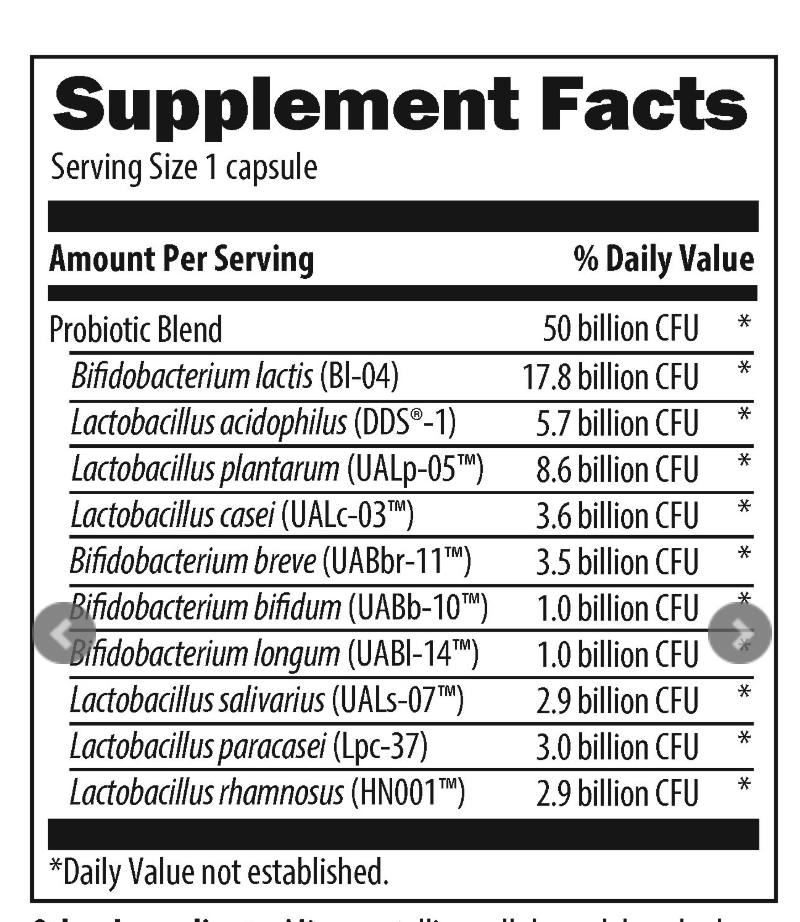
>>>ORTHOBIOTIC
I use this product for those that have clear dysbiosis (as measured on their GI MAP report), intestinal permeability (aka leaky gut), show low levels of Secretory IgA (a measurement of the immune function inside your gut), irregular bowel movements, and issues with micronutrient absorption.
You’ll notice this one includes saccharomyces boulardii which a beneficial yeast that helps crowd out overgrowth of pathogenic bacteria and parasites.


>>>BIOKULT
I love this product for those that need protection against antibiotic associated diarrhea, are dealing with an h. pylori infection, experience constipation or diarrhea, and for those with unexplained eczema.

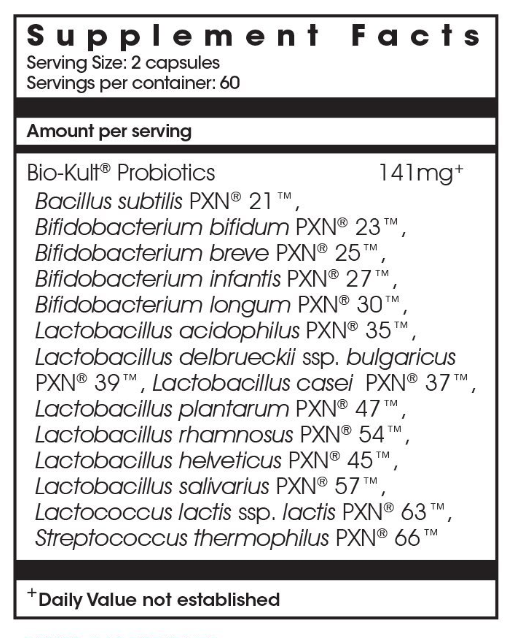
>>>NOW PROBIOTIC-10
This product contains 10 different strains of lactobacillus and bifidobacterium that are helpful in improving digestion, reducing intestinal permeability (aka leaky gut), supporting gut motility, helping with the detoxification process, and improving immune system functioning. This formulation is available in 25 billion and 50 billion CFU (colony forming unit) doses.
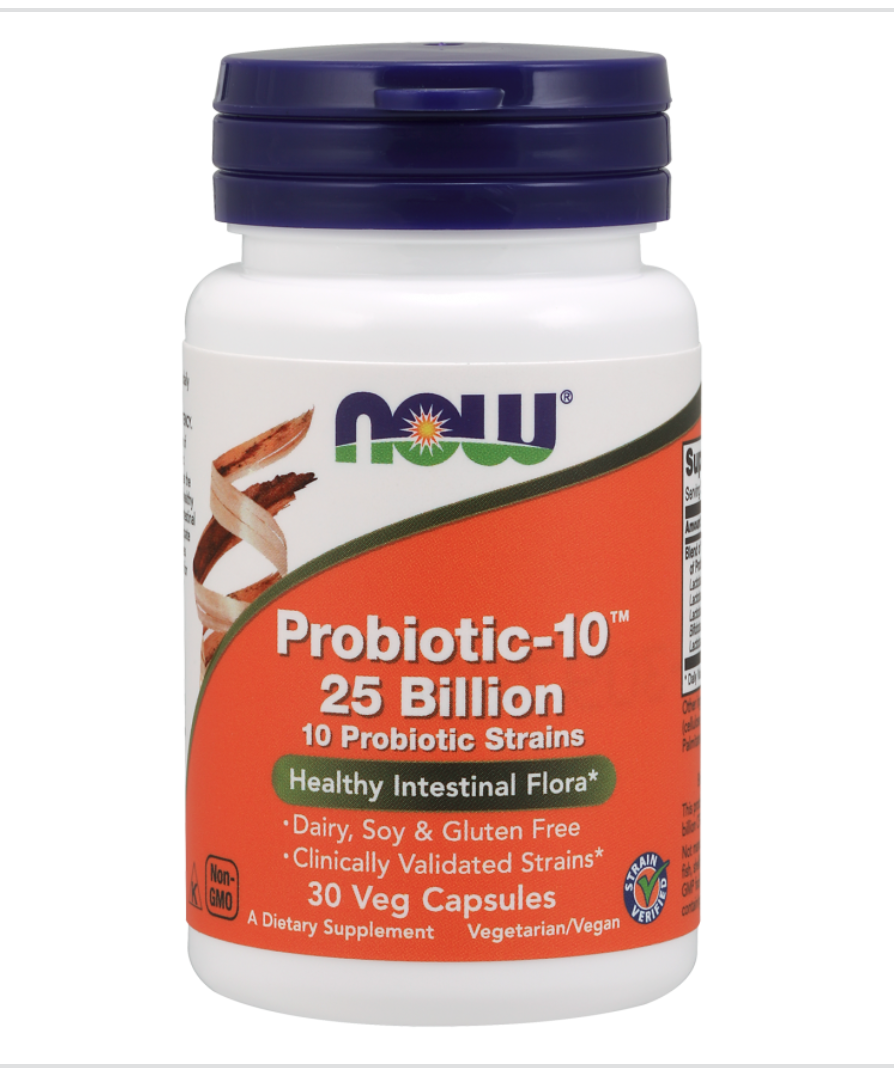
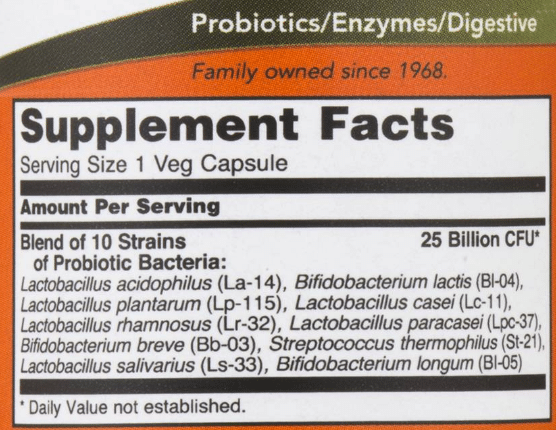
A QUICK 5-STEP GUIDE TO CHOOSING YOUR PROBIOTIC.
1.) As discussed above, choose a probiotic that contains the Genus, Species, and Strain in the name.
2.) Since our gut is filled with a diverse array of bacteria, it makes sense to find a probiotic with multiple strains. For an everyday probiotic try to choose those with 5-10 strains. If you’re treating something very specific, then a product with 1-2 strains could be warranted.
3.) Each capsule should contain between 5-20 billion CFU (colony forming units). It’s easier to start with a low dose and titrate your dose up as you go versus starting out with a mega dose (some brands have up to 400 billion CFUs!) which can be harder for some to tolerate.
4.) Choose those that don’t contain your allergens or food sensitivities. If you have a dairy allergy or intolerance, it might not make sense to choose a probiotic cultured from dairy because this could potentially do more harm to your gut than good. Same for those with gluten or corn sensitivities, be sure you read your labels carefully!
5.) Choose from brands that have been certified by a third party tester. Generally on the label it will state “NSF”, “USP”, or it will state it was produced in a “GMP” facility on the label.
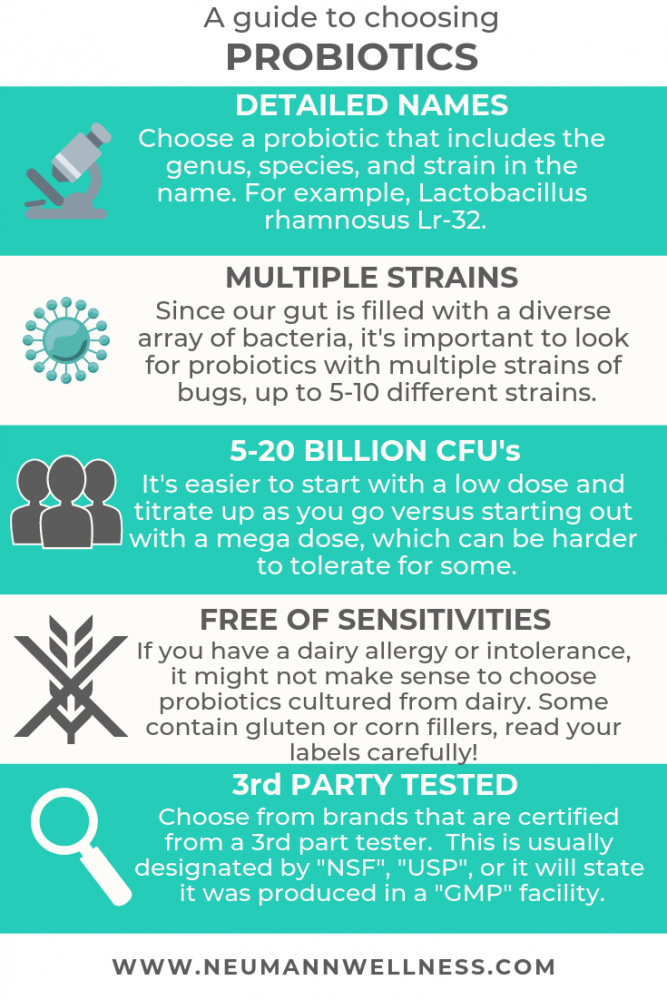
A FEW OTHER CONSIDERATIONS
It’s important you understand how to choose the right probiotic strains and dosages for your particular digestive concern. Particularly the Lactobacillus and Bifidobacterium genus have been shown to have the most benefit for IBS patients.
With probiotics you always want to start with a low dose and go slow as there is the potential to have negative reactions to probiotics if it’s too high of a dose, not the right strain for you, or if you have an underlying concern of small intestinal bacterial overgrowth (SIBO).
Give yourself at least 1 week to allow your microbiome to adjust to the new probiotic. It is typical to experience gas in the first week, so I advise clients take the probiotic before bedtime so they are less likely to notice side effects.
GET THE BEST STRAIN FOR YOUR SPECIFIC IMBALANCE.
If you’d like to get a more in depth view of what your microbiome looks like, I offer functional stool testing with GI MAP.
This stool test goes WAY beyond what your conventional doctor orders with a stool test. I’ve helped dozens of women get to the ROOT cause of their digestive imbalances with the incredible insight provided by these reports.
When we get a snap shot of your microbiome we can see what is and is not working well in your gut and proceed with an individualized plan that will help decrease and resolve your IBS symptoms.
If you’re a woman looking to jump start your digestive health journey, then I’ve got you covered! To learn more about my 12 week Digestive Reset Program, get started here!


